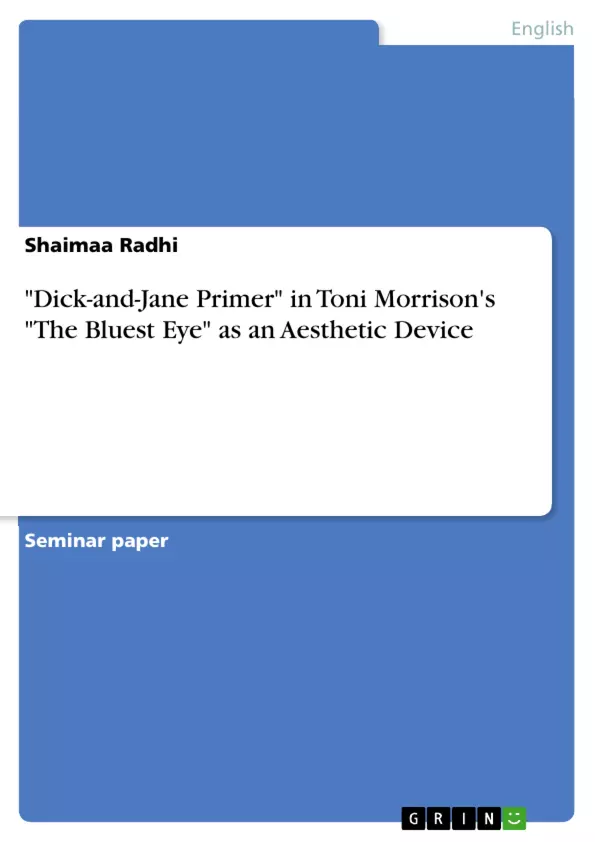The focus of this paper is the narrative mechanism of employing a paragraph of "Dick and Jane" Reader, which was popular in children schools in 1940s in the American United States. It educates children how to read and they hear it from the very beginning of their lives. Through such an educational system, the white dominant culture exerts its authority in oppressing black people. In her novel "The Bluest Eye", the African-American writer Toni Morrison cuts an expert of "Dick and Jane" narrative and uses it as a prologue. She repeats the paragraph three times which are highly different from each other, then dismembers it into pieces that appear as headings to some chapters of the novel. The study reveals the aesthetic purpose beyond such reproducing and dismembering of "Dick and Jane" narrative. Morrison sends a message of moral content to blacks as well as whites: On the one hand, blacks, particularly those who immersed in the white ideology, have to wake up and realize the value of their culture, heritage and language in protecting their black identity. On the other hand, whites should respect and admit the cultural and humane existence of the other and realize the merit of the black culture.
Table of Contents
- Introduction: Biographical and Literary Background
- The Primer
- Facet One: Representations of "Dick and Jane" Narrative: Ideals, Mimics and Cast offs
- I - Ideals (Stereotypes)
- II - Mimics or Mixed Race
- III Cast offs
- Facet Two: The Third pastiche: an Urge of Unity (Collectivity)
- Facet Three: Equal Function: Dismembering of Dick & Jane Primer & that of the White Doll as an aesthetic Function
- Facet Four: Musicality of "Dick and Jane" Primer
- Facet One: Representations of "Dick and Jane" Narrative: Ideals, Mimics and Cast offs
- Conclusion
Objectives and Key Themes
This paper examines the use of a paragraph from the popular "Dick and Jane" reader as a narrative mechanism in Toni Morrison's novel "The Bluest Eye". The study aims to uncover the aesthetic purpose behind the repeated use and dismemberment of this text, analyzing its implications for both black and white readers.
- The impact of dominant culture on black identity and self-esteem
- The importance of reclaiming black culture, heritage, and language
- The aesthetic function of the "Dick and Jane" narrative in the novel
- The role of music and improvisation in black culture and literature
- The importance of reader participation and interpretation in Morrison's work
Chapter Summaries
- Introduction: Biographical and Literary Background: This chapter introduces Toni Morrison and her literary background, highlighting her contributions to African-American literature and the influence of her upbringing on her writing. It also discusses the importance of identity for African-American writers and the role of art in reclaiming their culture.
- The Primer: This chapter focuses on the "Dick and Jane" primer, a popular educational tool for children in the 1940s. The chapter analyzes the primer's role in perpetuating white dominance and how Morrison utilizes it in "The Bluest Eye". It examines the different facets of Morrison's use of the primer, including its representation of ideals, mimics, and castoffs.
Keywords
This paper explores the themes of identity, race, culture, and literature through an analysis of Toni Morrison's "The Bluest Eye". Key concepts include the use of the "Dick and Jane" primer as an aesthetic device, the role of improvisation and music in black culture, and the importance of reader engagement in interpreting Morrison's work.
- Citation du texte
- Shaimaa Radhi (Auteur), 2017, "Dick-and-Jane Primer" in Toni Morrison's "The Bluest Eye" as an Aesthetic Device, Munich, GRIN Verlag, https://www.grin.com/document/370192



